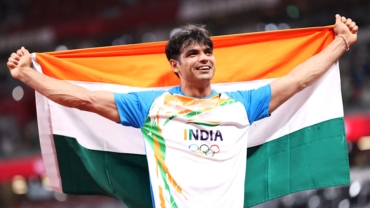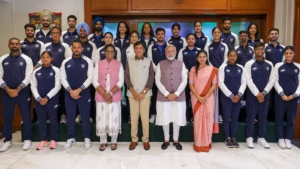Introduction: India’s Olympic Paradox
India, with its population of over 1.4 billion and a rich history in traditional sports, enters every Olympic season with high expectations. Yet, the nation’s performance consistently falls short. Despite a few moments of glory, India remains far from becoming a sporting superpower on the Olympic stage. The Paris 2024 Olympics have once again laid bare the gap between expectations and outcomes. This article explores the real reasons behind India’s Olympic performance, the challenges it faces, and what it must do to turn dreams into reality.
Historical Overview: India’s Olympic Journey
India’s Olympic story began in 1900, with Norman Pritchard winning two silver medals. The country’s dominance in hockey during the mid-20th century was a highlight, but consistent success across disciplines has remained elusive. Notable achievements include:
- Abhinav Bindra’s Gold (2008 Beijing)
- Karnam Malleswari’s Bronze (2000 Sydney)
- India’s best-ever performance: 7 medals in Tokyo 2020

However, the decline in Paris 2024 demonstrates that these successes remain the exception rather than the rule.
India Olympics Performance at Paris 2024
India’s Medal Tally and Rankings
India finished 71st in the overall medal tally at the Paris 2024 Olympics, a notable decline from its 48th position at Tokyo 2020. The country secured a total of six medals—one silver and five bronze.
List of Indian Medal Winners
- Neeraj Chopra – Silver (Men’s Javelin Throw)
- Manu Bhaker – Bronze (Women’s 10m Air Pistol)
- Manu Bhaker & Sarabjot Singh – Bronze (Mixed 10m Air Pistol)
- Swapnil Kusale – Bronze (Men’s 50m Rifle 3 Positions)
- Aman Sehrawat – Bronze (Men’s Wrestling, 57kg Freestyle)
- Indian Men’s Hockey Team – Bronze (Hockey)

Despite the efforts, there were several near-misses and disqualifications, such as Vinesh Phogat’s disqualification for being overweight, highlighting persistent gaps in preparation and professionalism.
Links Suggested: India-Sri Lanka Relations : 5 Strategic Wins for Both Nations
Why India Falls Short in Olympic Sports
1. Lack of Structured Talent Identification
India does not have a consistent, nationwide system for identifying sporting talent. Many gifted athletes in rural and underserved regions remain undiscovered due to lack of scouting mechanisms.
2. Poor Infrastructure and Training Facilities
Most towns and villages lack basic sporting infrastructure. Access to professional coaching, high-performance gyms, and sports science support remains a luxury. Athletes often train under outdated conditions without the resources available in top-performing nations.
3. Cricket’s Dominance in the Indian Sports Ecosystem
An overwhelming majority of corporate sponsorship and government investment is directed towards cricket. With 87% of sports capital going to cricket, Olympic sports must survive on the remaining 13%, leading to underfunded federations and demotivated athletes.
4. Inconsistent Sports Policies and Governance
Although schemes like Khelo India and TOPS (Target Olympic Podium Scheme) have emerged in recent years, India still lacks long-term athlete development plans. Sports bodies are often plagued by internal politics, corruption, and lack of athlete representation.
5. Lack of Sports Culture in Society
Academic success continues to be prioritized over sporting achievements. Most families consider sports an extracurricular hobby rather than a viable career. Without social support, many talented individuals abandon their athletic pursuits early.
6. Gender and Social Barriers
Social stratification, caste discrimination, and gender norms often limit access to sports for girls and marginalized communities. Only a few manage to break through systemic and cultural barriers to succeed at the global level.
Links Suggested: India-China Trade War: Can India Adopt Trump’s Economic Playbook?
Lessons from Other Nations
1. China’s Model
China identifies athletes as young as five and trains them through state-funded academies. Their Olympic success is built on decades of planned investment, talent development, and discipline.
2. The United States and the NCAA System
The U.S. collegiate sports system (NCAA) is the backbone of Olympic success for not just America but many other countries. In Paris 2024 alone, the NCAA system produced over 60 Olympic gold medallists. This combination of education and sports is key to long-term athlete support.
3. Smaller Nations with Focused Programs
Countries like Jamaica (sprinting) and Kenya (middle-distance running) focus on a few core disciplines and dominate them globally. Their models prove that strategic investment, even in limited disciplines, can lead to international success.
Links Suggested: India-Bangladesh Relations: Why India Withdrew the Trans-Shipment Facility
What India Can Do to Improve Olympic Performance
1. Develop Grassroots Infrastructure
Government and private sector must invest in sports infrastructure at the block and district levels. Schools should be equipped with basic facilities and trained physical education teachers.
2. Launch a National Talent Search Program
A structured national scouting program should be launched, with collaborations across schools, NGOs, and state federations to identify young talent and support them through scholarships and training.

3. Establish a Collegiate Sports System
India must create a collegiate league structure to support university athletes academically and athletically. Inter-college competitions should be expanded to develop talent for the national level.
4. Increase Funding and Sponsorship for Olympic Sports
A balanced sports budget is essential. Funding allocation must prioritize Olympic sports, ensuring access to international training, equipment, and exposure.
5. Empower Athletes in Governance
Athletes should be part of sports policy decisions to ensure programs are tailored to their real-world challenges. This will improve transparency and foster a culture of accountability in sports federations.
6. Shift Public Attitudes Toward Sports
Through awareness campaigns, media representation, and local events, sports should be promoted as a mainstream profession. Role models like Neeraj Chopra and PV Sindhu must be celebrated widely to inspire youth.
Key Sports Initiatives in India
1. Khelo India Mission
Promotes sports among youth with the aim of building a strong foundation for athletes at the school and college level.
2. Target Olympic Podium Scheme (TOPS)
Provides financial assistance, coaching, and international exposure to elite and developmental athletes.
3. Sports Authority of India (SAI)
Oversees the implementation of sports programs and operates training centers across the country.
4. National Sports Development Fund (NSDF)
Supports athletes with training, medical assistance, and competition funding.
5. Fit India Movement and Rajiv Gandhi Khel Abhiyan
Encourage fitness and grassroots sports culture, including infrastructure development in rural India.
Links Suggested: Digital India and Cyber Security: Balancing Innovation and Protection
Looking Ahead: The Road to Los Angeles 2028
India must aim to triple its athlete count for the Los Angeles 2028 Olympics and expand participation across more disciplines. The goal should not be to host the Olympics in 2036 just for prestige but to become a serious contender on the global stage. This will require transforming how India views, funds, and manages sports.
From grassroots training to Olympic podiums, the journey requires vision, investment, and collective will. Paris 2024 should not be seen as a setback but as a wake-up call.
Conclusion: Bridging the Gap Between Dreams and Performance
India’s Olympic journey continues to reflect ambition but also exposes critical weaknesses in the national sports ecosystem. While medals from athletes like Neeraj Chopra and Manu Bhaker offer hope, a fundamental overhaul is needed to produce consistent results. From systemic reforms to cultural shifts, India must reimagine its sports architecture if it wishes to bridge the gap between dreams and reality.

